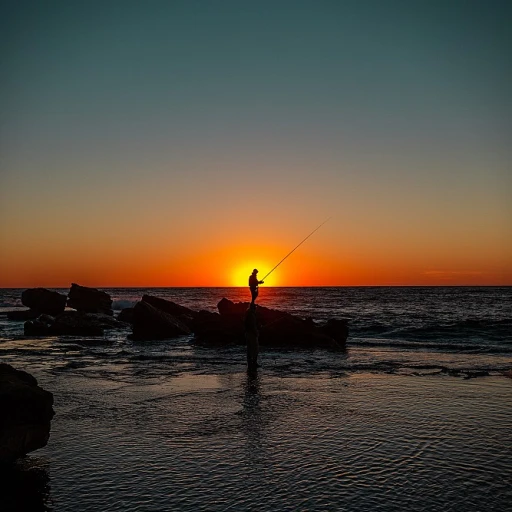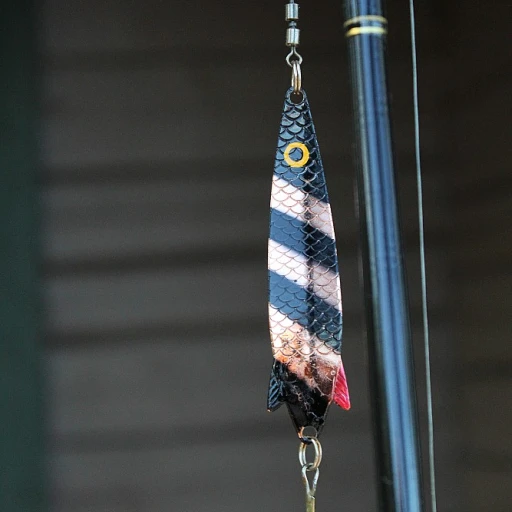
The legendary catch: Ken Fraser's world record bluefin tuna
Ken Fraser: the man who landed a legend
When folks talk about epic angling feats, Ken Fraser's name pops up every time. On October 26, 1979, off the chilly waters of Nova Scotia, Fraser etched his name into history. Armed with nothing more than determination and a hefty fishing rod, he hooked a mind-boggling 1,496-pound bluefin tuna.
The epic battle: hour-long struggle with a giant
This wasn't just any regular fish fight. Fraser wrangled with this marine behemoth for over 45 grueling minutes, a testament to both the fish's immense power and Fraser's endurance. He was quoted saying, "It felt like reeling in a freight train," capturing the sheer force and willpower required.
Record-breaking facts
This record-smashing bluefin weighed a whopping 1,496 pounds, making it the largest bluefin tuna ever caught using rod and reel. This milestone entry is still proudly listed in the IGFA's hall of fame.
Fraser's enduring legacy
Ken Fraser remains an icon in the angling community. His catch not only set the bar sky-high but also put a global spotlight on Nova Scotia as a top destination for fishing enthusiasts. His record stands firm to this day, a true testament to his skill and tenacity.
The gear that made history
Fraser's weapon of choice? A solid, high-tension rod paired with robust tackle and reel. The setup was meticulously chosen for endurance and strength, vital for battling a fish of that magnitude. It was a match of man, muscle, and meticulously chosen gear against the raw power of the open ocean.
Future of bluefin tuna fishing
While Fraser's catch remains unmatched, advances in tackle technology and improving fishing methods keep the dream alive for many anglers worldwide. The quest for the next record breaker continues, fueled by stories like Fraser's.
The science behind bluefin tuna: what makes them giants?
Bluefin tuna: the science behind the giants
Bluefin tuna, whether swimming in the Atlantic or the Pacific, are gigantic marvels. One factor that contributes to their massive size is their unique physiology. These fish possess a feature called counter-current heat exchange, allowing them to maintain a body temperature higher than the surrounding water. This adaptation gives them incredible speed and agility, making them fearsome predators in the deep.
In terms of growth, bluefin tuna exhibit indeterminate growth, meaning they continue to grow throughout their lives. DNA analysis suggests these fish can live up to 40 years or more. The more they live, the more they grow—reaching weights beyond 1,000 pounds. According to the IGFA, the largest bluefin tuna caught on rod and reel was a staggering 1,496 pounds, caught by Ken Fraser off Nova Scotia in 1979.
Bluefin tuna are also remarkable migrators. They can traverse entire oceans, covering thousands of miles. A study published in the journal Nature revealed that Atlantic bluefin can cross the Atlantic Ocean in just over a month. Their muscles are packed with myoglobin, enabling them to sustain long periods of intense activity. The Gulf Stream and North Atlantic currents help guide them from breeding grounds in the Gulf of Mexico to feeding areas off New England and Europe.
These fish are top-tier predators, feeding on a diet rich in protein—primarily smaller fish, squid, and crustaceans. This high-protein diet fuels their rapid growth and maintains their powerful musculature. Their keen senses, including exceptional vision, help them hunt efficiently even in low-light conditions.
The journey of these aquatic giants from the Gulf of Mexico to the waters off Nova Scotia is nothing short of awe-inspiring. Tracking studies using satellite tags have shown that bluefin tuna can dive to depths of up to 3,000 feet, adjusting their physiology as pressure changes.
Understanding the science behind these giants helps anglers and researchers alike. It reveals why some fishing areas like Prince Edward Island and the waters off Nova Scotia consistently produce record-breaking catches. To learn more about the challenges and controversies in giant fish catches, check out how big do catfish get.
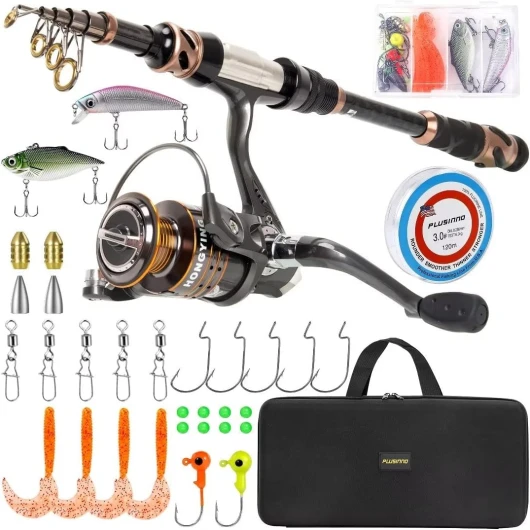
- + Carbon Fiber construction for lightweight and durability
- + Telescopic design for easy transport
- + 12 + 1 Shielded Bearings for smooth operation
- + Stainless Steel BB for rust resistance
- + Includes carrier case for storage
Top locations for catching giant bluefin tuna
Nova Scotia: A bluefin haven
Nova Scotia, with its chilly waters and abundant fish stock, has been a hot spot for anglers seeking giant bluefin tuna. Ken Fraser's legendary catch took place here, and it's easy to see why: The area boasts some of the most productive bluefin fishing waters in the world. Nova Scotia's deep coastal waters provide an ideal habitat for bluefin tuna, making it a premier destination for bluefin enthusiasts.
Prince Edward Island: Home of the giants
Just a hop away from Nova Scotia, Prince Edward Island (PEI) is another prime location for bluefin tuna fishing. PEI's seasonal fishing regulations and sustainable practices ensure a rich bluefin population, attracting anglers from all corners of the globe. Eric Samson, a well-known pro angler, has praised PEI for its massive bluefin catches. He recounts a thrilling catch: "The fight lasted over four hours, and that beast weighed more than 1,200 pounds!"
The Gulf of Maine: A bluefin hotspot
The Gulf of Maine is another renowned location for bluefin enthusiasts. Known for its nutrient-rich waters, the Gulf attracts bluefin tuna during their yearly migration. The bustling fishing towns of New England, particularly in Massachusetts, have long histories of bluefin fishing. Seasoned anglers and newcomers alike find success here, reeling in giants that tip the scales. Shimano and other top tackle brands are often put to the test in these waters, with giant bluefin tuna pushing gear to its limits.
If these top locations for catching giant bluefin tuna have intrigued you, be sure to check out our comprehensive guide to the fishing calendar to plan your next epic fishing expedition.
The gear and tackle used in record-breaking bluefin tuna fishing
Essential gear for record-breaking catches
When it comes to snagging a world record bluefin tuna, the right gear is critical. Every angler knows that you can’t just stroll into such a venture. Ken Fraser, who holds the title for the biggest bluefin tuna ever caught, surely didn’t skimp on his equipment. Fraser’s legendary 1,496-pound catch back in 1979 was a testament to the power of robust, high-quality tackle.Rods and reels: the backbone
The backbone of any serious bluefin tuna fishing expedition lies in the rods and reels. Anglers aiming for giant bluefin tuna typically use heavy-duty rods designed to withstand immense pressure. Shimano’s Tallus Blue Water Series rods are often praised by experts like Eric Samson for their durability and strength. Similarly, reels like the Shimano Tiagra 80W, known for holding copious amounts of line and having tremendous drag capabilities, are favorites among seasoned anglers.Line and leader: strength is key
Beyond rods and reels, the type of line and leader can make a substantial difference. For these ocean behemoths, anglers commonly use a braided line with high tensile strength, typically in the range of 100-pound test or more. Leaders made from fluorocarbon or monofilament, which are known for their abrasion resistance, are also crucial. The line and leader must be reliable enough to handle the surges and runs of a frenzied bluefin.Lures and baits: the irresistible temptations
Lures and baits play a pivotal role too. Various types of lures, such as the spreader bars and daisy chains, mimic the schools of smaller fish that bluefin tuna prey upon. Meanwhile, live baits like mackerel or herring are often used to tempt these giants. The Gulf of Mexico and Nova Scotia are renowned, not just for their abundance of bluefin, but also for the quality of baitfish available, making them prime spots for this type of sport fishing.Harness and fighting chair: for the long haul
Hooking a giant bluefin can be a grueling test of endurance, often lasting hours. Hence, many anglers use a fighting chair equipped with a harness system to provide support. This setup allows them to leverage their body weight and conserve energy during the struggle. Structured to distribute the strain evenly, these harnesses are instrumental in battling these enormous fish without succumbing to fatigue.Electronic fish finders: technology edge
Another piece of modern gear elevating the bluefin tuna fishing game is the use of electronic fish finders. These devices, such as Garmin’s GPSMAP series, help anglers locate schools of tuna more efficiently by providing real-time data about underwater topography and fish movement. It’s technology meets fishing, a blend that seriously amplifies the angler’s success rate.Experience from the pros
One experienced angler, who frequent the waters off Prince Edward Island, stressed the importance of adaptability. “Every fish is different,” they said. “Sometimes, it’s the bait; other times, the timing and weather. Learning to read the ocean can be as valuable as having the best gear.” It’s this union of skill and equipment that often spells the difference between an ordinary fishing day and a potential record-breaker. Understanding these intricacies and having the right gear is paramount. Not only can it net you a prize fish, but it also enriches your fishing experience, making the journey much safer and more enjoyable.Notable bluefin tuna records and the anglers behind them
Ken Fraser and the 1496-pound giant
When it comes to bluefin tuna records, Ken Fraser's legendary catch on October 26, 1979, stands unbeaten. Caught off Nova Scotia, this behemoth weighed a staggering 1496 pounds and was officially recognized by the International Game Fish Association (IGFA). According to reports from fishing-magazine.net, this record still amazes anglers worldwide.
Pacific bluefin: challenging the giants
Eric Samson made headlines in 2014 with a colossal 907-pound Pacific bluefin tuna off New Zealand. Although not as heavy as Fraser's Atlantic bluefin, catching a fish this size in the Pacific waters demonstrates the species' immense global presence.
Anglers aiming for the biggest catch
Another notable angler is Donna Pascoe, who caught a 907-pound Pacific bluefin tuna in New Zealand waters in 2014. Using Shimano gear and impeccable skills, Pascoe's catch highlights the importance of the right tackle and efficient techniques.
The 2015 Gulf of Mexico catch
In 2015, Corey Knowlton reeled in a 727-pound bluefin tuna in the Gulf of Mexico. Using modern gear and strategic angling techniques, Knowlton’s feat was noteworthy, showcasing resilience and expertise in bluefin tuna fishing.
Record bluefin tuna catch and the rig
Anglers like Corey Knowlton often use top-of-the-line gear such as Shimano reels, which can spool up to 200 pounds of line, enhancing the chances of landing a record bluefin tuna. The choice of gear and tackle significantly impacts these catches, with seasoned anglers reaffirming the importance of high-quality equipment.
The role of the IGFA in maintaining fishing records
Understanding the role of IGFA
The International Game Fish Association (IGFA) serves as the keeper of fishing records globally, including the prestigious world record bluefin tuna. Founded in 1939, the IGFA aims to ensure that sport fishing remains sustainable for future generations while maintaining meticulous records of record-breaking catches. Their standards and regulations have become the touchstone for fairness and accuracy in documenting world records.
One of the most pivotal elements of IGFA's role is in the record submission process. This stringent process involves the angler providing extensive documentation, such as photos, measurements, and witness testimonies. The goal is to verify the catch's legitimacy and prevent any false claims. The strictness of their protocols fosters integrity in the sport fishing community.
Specific rules and guidelines
When Ken Fraser caught his record bluefin, he had to comply with various IGFA regulations. These guidelines cover every aspect—from the type of tackle used to how the fish is handled and weighed. For instance, the use of proper certified scales for weighing the tuna is non-negotiable. Even the line employed must fall within specified standards to ensure it meets the criteria for the record.
The IGFA also maintains specific rules regarding the fishing method. In Fraser's case, the use of rod, reel, and line was scrutinized closely. The rules aim to ensure that each record-holder competes on a level playing field. This rigorous focus guarantees that the angler's skills and not technological advantages decide records.
Maintaining fairness and ethics
Fairness and ethics are cornerstones of IGFA's mission. The organization works tirelessly to ensure all anglers adhere to ethical fishing practices. Over the years, this has included a commitment to conservation, ensuring bluefin tuna populations thrive for future generations to enjoy.
In the wider community, the ethical requirements have led to several high-profile disqualifications. These serve as a reminder of the organization's commitment to maintaining the integrity of sport fishing records. For example, any tampering or unethical behavior, such as weight alterations or fish substitutions, results in immediate disqualification.
Bluefin tuna and angler endorsements
Beyond its role in record-keeping, the IGFA also hosts various events and competitions to endorse and celebrate the achievements of exceptional anglers. Events like the IGFA Fishing Hall of Fame illuminate the incredible feats accomplished by anglers worldwide. Figures such as Ken Fraser often emerge as heroes in these settings, inspiring future generations of sport fishers.
These endorsements help maintain a thriving community around sport fishing. They ensure that vital fishing techniques and ethical practices are passed down, indirectly contributing to conservation efforts. Anglers involved in this community often take part in conservation initiatives, further emphasizing the IGFA's role as a stalwart for sustainable fishing practices.
Controversies and challenges in bluefin tuna fishing
Controversies and ethical challenges in bluefin tuna fishing
Bluefin tuna fishing has always been under the spotlight, not just because of the mammoth size of these fish, but due to controversies surrounding sustainability, ethical fishing practices, and international regulations. As more anglers try to chase records and these giant tunas swim the deepest oceans, the intersection of sport and conservation becomes increasingly complex.Sustainability concerns
Attempting to balance the thrill of catching a world record bluefin tuna with the need for sustainability is a tightrope walk. Overfishing has been a significant issue in the Atlantic and Pacific waters, leading to declining populations of bluefin tuna. According to a 2022 report by the International Commission for the Conservation of Atlantic Tunas (ICCAT), there has been a noticeable decrease in populations, with estimates showing a reduction of over 40% in certain regions—particularly the Gulf of Mexico and the Mediterranean.Quota regulations and enforcement
The introduction of fishery management plans and quota systems by bodies such as ICCAT and national authorities aims to curb the overexploitation of these fish. However, reports from the Pew Charitable Trusts in 2021 highlighted a lack of enforcement and persistent illegal fishing activities. The quotas set by organizations like the ICCAT often face opposition, as many commercial fishermen and sport anglers argue that the limits are either too restrictive or unfairly distributed among different fishing nations.Advocates' pursuits and industry resistance
Environmental groups, including organizations like Greenpeace and the World Wildlife Fund (WWF), have been active in pushing for more stringent controls on bluefin tuna fishing. These groups argue that without significant intervention, bluefin tuna might face a future akin to many overfished species: dwindling numbers leading to potential endangerment. WWF, for instance, has called for complete moratoriums on bluefin fishing during spawning seasons to help populations recover. Critics, however, argue that such measures would devastate the livelihoods of those relying on tuna fishing.The ethical debate: catch and release
Within the recreational fishing community, the ethics of catch and release for record-size bluefin tuna is hotly debated. Methods and gear, such as heavy-duty Shimano reels spooled with hundreds of pounds of line, ensure that fish endure prolonged fights, leading to exhaustion and sometimes death after release. Critics argue that the potential harm to these fish outweighs the glory of record chases. Eric Samson, a marine biologist with NOAA, has emphasized the need for ethical guidelines to minimize fish stress and injury while promoting catch-and-release practices that truly contribute to conservation efforts.International trade and market drives
The international demand for bluefin tuna, especially in markets like Japan where a single bluefin can sell for millions, drives much of the overfishing. According to National Geographic, in 2020, a Pacific bluefin tuna was sold at the Tokyo fish market for an astonishing $1.8 million. This high market value creates a relentless pressure on fishermen to catch more, often leading to bending or breaking international regulations, thus exacerbating the challenges of maintaining sustainable populations.Looking forward: technological solutions and international cooperation
Future prospects to alleviate these challenges may lie in technological advancements and more cohesive international cooperation. Initiatives like satellite tracking of tuna stocks and drones for monitoring fishing efforts show promise. As Ken Fraser, the holder of the world record bluefin tuna caught off Nova Scotia, remarked in a 2019 interview, "We need to use every tool at our disposal if we want these giants to be around for future generations to marvel at and chase after." Through combined efforts and an emphasis on sustainable practices, the delicate balance between sport fishing excitement and conservation might just find a harmonious path forward.Future prospects for bluefin tuna fishing and records
Current trends and innovations in bluefin tuna fishing
Bluefin tuna fishing is a dynamic and evolving field, with many anglers and researchers constantly seeking ways to innovate and improve practices. One of the most notable trends is the increased use of advanced technology and equipment. For example, the Shimano Tiagra A series reels have become a favorite among professional anglers for their durability and smooth drag system, which is crucial when reeling in a massive bluefin tuna.
In addition to advancements in gear, there's a growing interest in sustainable fishing practices. Organizations like the International Game Fish Association (IGFA) promote responsible fishing activities to ensure the longevity of bluefin tuna populations. According to the IGFA, tagging and releasing (or catch and release) is a practice that’s becoming increasingly popular among sport fishers. This method not only allows anglers to experience the thrill of the catch but also helps preserve the species for future generations.
Another innovation in bluefin tuna fishing involves the use of satellite tagging to study their migratory patterns. This technology helps scientists understand and protect these giant fish better. According to a recent study published in the journal Nature, bluefin tuna have been tracked traveling from the Gulf of Mexico to the Mediterranean Sea, showcasing their incredible endurance and navigational skills.
The fishing community has also seen a surge of interest in tournaments and competitive fishing expeditions. Events such as the Prince Edward Island Tuna Cup draw anglers from around the world aiming to break records or simply enjoy the camaraderie. These tournaments often introduce updates on the latest fishing techniques and gear, offering anglers an opportunity to learn from the best in the business.
Moreover, there's been a notable rise in the popularity of bluefin tuna charters. Anglers who might not have the means or experience to venture out on their own can book a charter with experienced captains who know the best spots and techniques for catching these giants. Prince Edward Island and Nova Scotia are popular destinations for such charters, drawing enthusiasts eager to test their skills against the mighty bluefin.
Upcoming challenges and conservation efforts
Despite the advancements and growing interest in bluefin tuna fishing, there are significant challenges and controversies surrounding the practice. Overfishing and illegal fishing have severely impacted bluefin populations, prompting regulations and conservation efforts worldwide. The Atlantic bluefin tuna, in particular, has been subject to strict quotas by organizations like the International Commission for the Conservation of Atlantic Tunas (ICCAT).
Experts like marine biologist Dr. Eric Samson have highlighted the necessity for stricter enforcement of these regulations to prevent the decline of bluefin tuna stocks. There have been cases where illegal fishing operations were caught using unregulated gear or fishing out of season, jeopardizing the delicate balance of bluefin tuna ecosystems.
Another challenge is climate change, which affects the migratory patterns and breeding grounds of bluefin tuna. Warmer ocean temperatures and changes in prey availability can disrupt their natural habitats, making it harder for them to thrive. Research by institutions like the University of New England has emphasized the need for adaptive management strategies to address these environmental changes.
On a brighter note, many fishing communities and environmental organizations are actively involved in bluefin tuna conservation. Programs like the WWF's Global Tuna Conservation Project work to promote sustainable fishing practices and protect critical habitats. Through collaborative efforts, there's hope that the bluefin tuna population can recover and continue to be a source of excitement and pride for anglers worldwide.
In conclusion, the future of bluefin tuna fishing is filled with both opportunities and challenges. Innovations in gear and sustainable practices offer promising prospects, but the pressures of overfishing and climate change require ongoing vigilance and effort from the global community. The legendary catches of the past, like Ken Fraser's record-setting bluefin, serve as a testament to the enduring appeal and formidable nature of these giant fish.

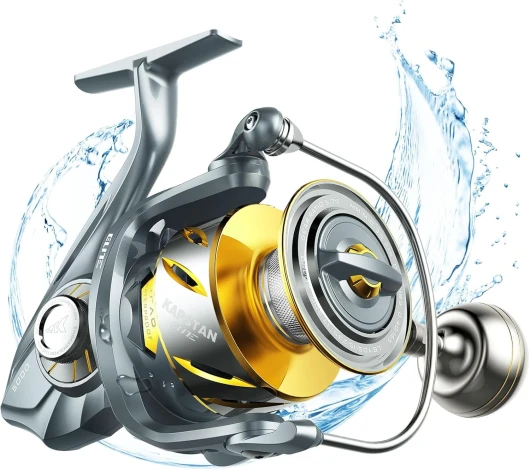
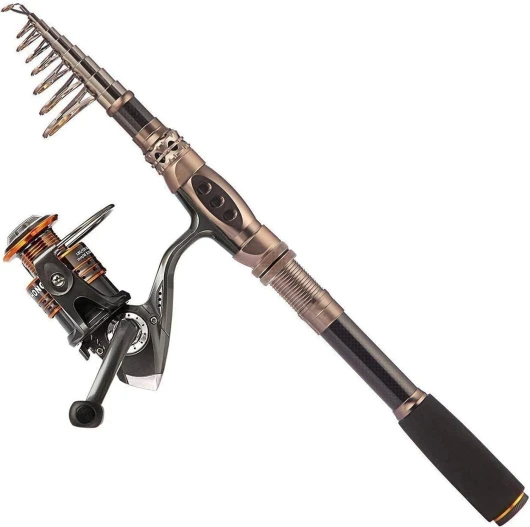
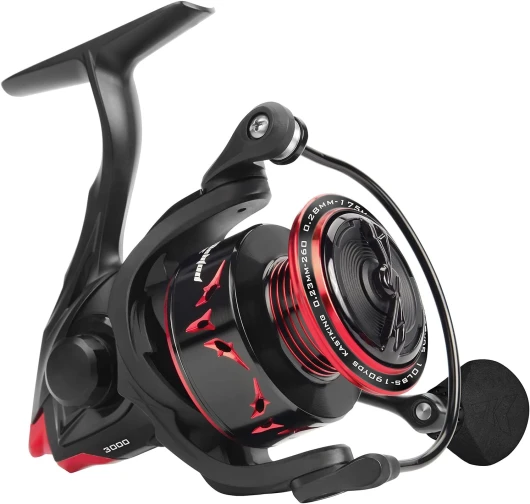
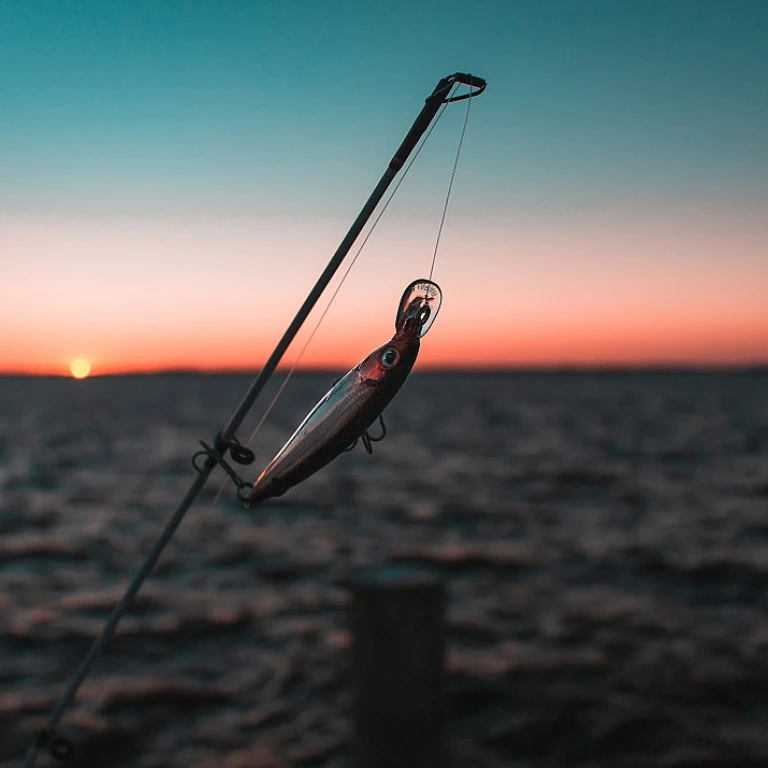

-large-teaser.webp)

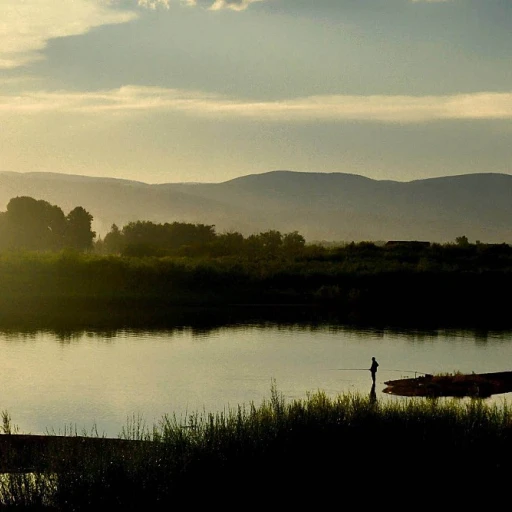
-large-teaser.webp)
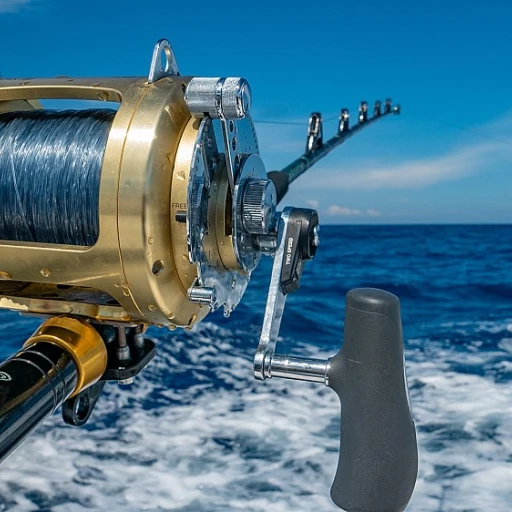
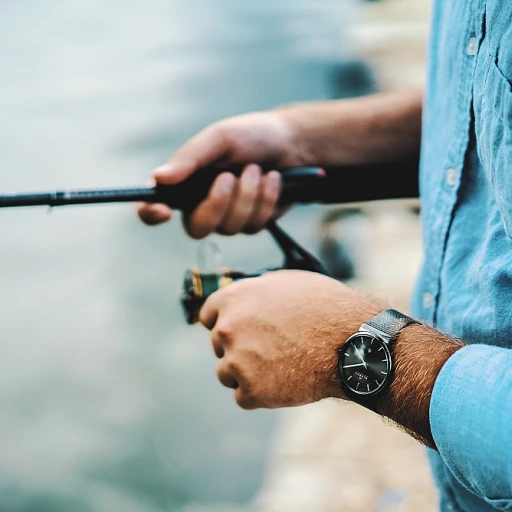
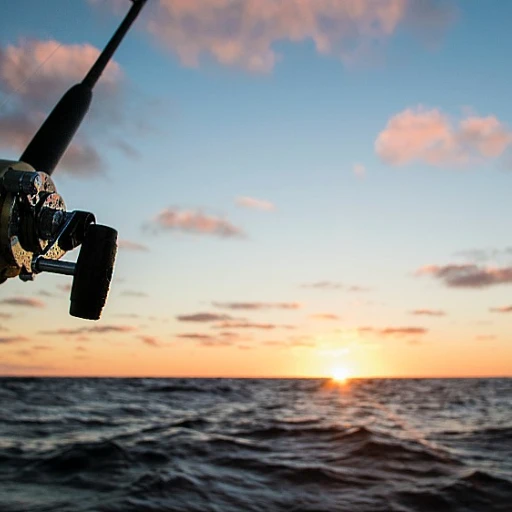

-large-teaser.webp)
